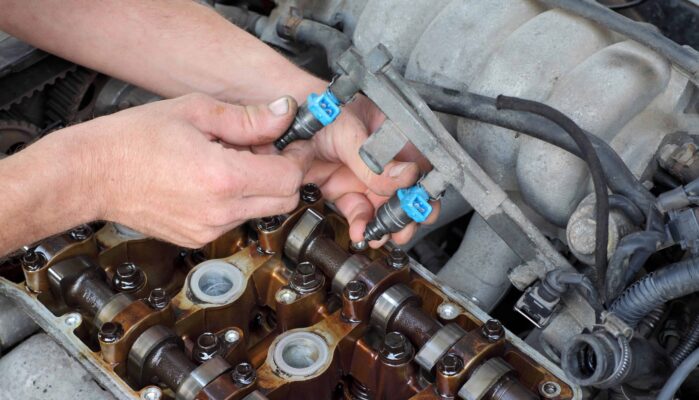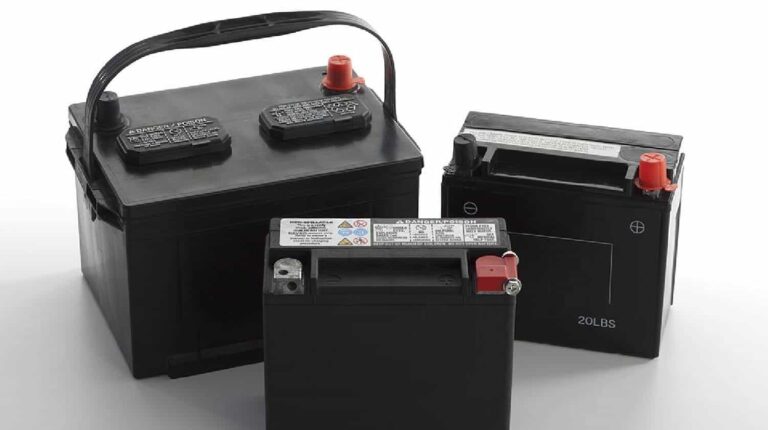
The flywheel is an essential component for the smooth operation of an internal combustion engine and plays a crucial role in regulating speed and power. This spinning wheel is located in between the crankshaft and clutch to ensure consistent acceleration and to maintain speed while driving. Whether you are a car enthusiast, a seasoned mechanic or just like to read about cars, understanding the function of a flywheel is a fascinating journey into the heart of an internal combustion engine. Throughout the years, manufacturers have been developing flywheel technology to improve engine operation, boost fuel efficiency and make the component more compact. Volvo has been at the forefront of pioneering automobile technology, and in this regard, they developed the Flywheel KERS (Kinetic Energy Recovery System). Let’s look more closely at flywheel technology by Volvo and dive into more details in this blog.
What is a Flywheel?
A flywheel is a mechanical component that stores rotational energy and releases it to regulate the power delivery. An internal combustion engine produces power intermittently at every power stroke, resulting in a pulsating force through the crankshaft and transmission. With the help of a flywheel, this force is evened out and vibrations are eliminated completely. The driver receives a seamless driving experience with even power and consistent speed regulation.
The flywheel is made from durable materials such as iron, steel, aluminium or other metal alloys. It is connected to the crankshaft of the engine and transmits kinetic energy to the clutch and transmission.
The key to a flywheel energy storage system relies on inertia, or the tendency of the component to continue spinning even when the power is cut off. The inertia is a property of the mass, weight and design of the flywheel as well as its location in relation to the engine. The more inertia a flywheel possesses, the more effectively it can regulate the speed of the engine.
Checkout here Manual Transmission Cars: Old is Gold?
Flywheel Technology by Volvo – Flywheel KERS
Volvo has developed a new type of flywheel which makes a 4-cylinder engine feel like a 6-cylinder with an estimated 20% reduction in fuel consumption. Volvo received a grant from the Swedish Energy Agency to develop this cost-efficient next-generation technology for the kinetic recovery of braking energy.
The flywheel KERS technology by Volvo is installed on the rear axle of the vehicle and can spin to 60,000 rpm during braking using recovered kinetic energy. It transfers that energy to the rear wheels via a special transmission as the car starts moving again. When the driver hits the brakes, the internal combustion power is cut to the front wheels and excess kinetic energy is stored in the flywheel for use when the driver starts accelerating again or at cruising speeds. With this flywheel technology, the engine can be switched off 50% of the time resulting in savings on fuel consumption.
The efficiency of Volvo flywheel technology is optimized during driving in stop-and-go traffic and is activated by braking. Therefore, maximum fuel savings occur in urban traffic and crowded city driving. In addition, the flywheel for energy storage can be combined with engine power at full capacity to gain an extra 80 horsepower, resulting in quicker acceleration and faster performance.
Volvo flywheel technology has been in research since the 1980s when they were still using steel flywheels to evaluate engine performance and efficiency. Steel is a heavy material, large and has limited rotational capacity making them difficult to use. The latest advancements by Volvo incorporate carbon fibre technology for a lighter flywheel (weighing only 6 kg) and smaller (20 cm diameter) size. It operates in a vacuum to further enhance efficiency by reducing friction.
Here checkout the Best DCT Cars In India
Advantages of the Flywheel by Volvo KERS System
Volvo says its flywheel technology is lightweight, fuel efficient, eco-friendly and financially viable to improve the performance of a vehicle.
The system for energy storage in a flywheel does not use batteries, instead, it captures energy during braking and releases it for better acceleration.
The power boost is instantaneous, cutting 0-100 km/h times by 1.5 seconds. It transforms a front-wheel drive car to 4-wheel drive when the flywheel KERS is working, with the petrol engine powering the front wheels and the flywheel powering the rear axle.
The power boost sustains for up to 10 seconds with only 8 seconds of braking required to fully replenish the flywheel energy. Fuel efficiency is also increased with this system.
Checkout here Best and Upcoming Hybrid Cars in India 2023
Conclusion
It is proved that Volvo flywheel KERS technology has several benefits over regular flywheel components. Not only will drivers save on fuel costs, but they will also have enhanced performance with greater BHP and quicker acceleration times. The system is compact and lightweight making it suitable for use even in small hatchbacks.
Volvo KERS is a promising solution for the automotive industry providing an efficient and performance-oriented alternative to traditional technology.
Be sure to check out other great articles on the Carorbis blog. Have a look at The List of low-budget Kia cars in India and the Complete list of Maruti low-priced cars
Frequently Asked Questions
Q1. Why Flywheel is Used in Engines?
Ans. Internal combustion does not produce smooth, continuous output, as the power stroke is followed by exhaust, intake and compression strokes. This pulsating force would cause a jerky drive if the engine did not have a device to smooth out the power delivery. The flywheel is used in this case to even out movement by storing rotational energy during the power stroke and releasing it during the other strokes. As a result, there is less stress on the engine and vibrations are reduced to provide a good driving experience. The flywheel assists in maintaining momentum during gear changes when the power is momentarily reduced. It also helps the engine turn over during starting by providing the necessary inertia.
Q2. Can Flywheel Be Used for Energy Storage?
Ans. Rotational energy is produced during the power stroke of internal combustion engines; however, this is only for ¼ the time in a 4-stroke engine. The rest of the strokes do not produce power output; therefore, movement is not completely smooth. This uneven power delivery can produce vibrations, jerkiness and stress on engine components such as pistons, cylinders and crankshaft assemblies. A flywheel is used to store energy during the power stroke and release it evenly during other strokes. It is made of a metal disc which stores kinetic energy and results in the smooth operation of the engine. Fluctuations in power delivery are greatly reduced with a flywheel.
Q3. Does Flywheel Affect Performance?
Ans. The most obvious effect of a flywheel is to improve engine smoothness. But certain types of flywheels can maintain engine speed, improve response time and acceleration, and provide a sporty driving experience. Basically, a light flywheel can spin faster and therefore provide better acceleration, but a heavier flywheel will sustain high speeds at the cost of initial pickup. High-performance engines use light flywheels to allow for free-revving without hindrance. The specifications of the flywheel depends on the engine design and applications. A flywheel helps smooth out the unevenness of an engine but it can also add weight and reduce power output in some engines. The flywheel used on a motorcycle is compact and lightweight as compared to one used on a truck which is heavy and designed to handle more weight and power.
Q4. Where the Flywheel is Fitted in the Engine?
Ans. The flywheel is typically connected at one end of the crankshaft between the clutch and transmission. It acts as a coupling mechanism by transmitting torque from the engine to the clutch. The clutch transmits power from the crankshaft to the transmission and onto the driven wheels. The flywheel’s position and design are critical for the proper functioning of the clutch and transmission as it acts as an interface between the two to ensure a smooth and efficient transfer of power. The flywheel is made of iron or steel with a smooth, uniform surface. Its weight, diameter and moment of inertia are important design characteristics which affect its ability to store and release energy.
Q5. Why Flywheel is Called Flywheel?
Ans. The term flywheel is derived from their use in steam engines where the component consisted of two weights flying around a circle on two arms that cut power to the engine when a certain speed was achieved in order to keep the engine operating smoothly. These flywheels helped prevent stalling and counteracted fluctuations in engine power and speed. This name carried forward to internal combustion engines which achieved the same purpose but with a different design. Over time, flywheels have become common on internal combustion engines and industrial machinery to regulate speed and maintain consistent power delivery.
Q6. Flywheels Are Generally Made From?
Ans. Flywheels in car engines are generally made from steel or iron due to their high strength and durability, as well as their high density and weight. Specific types of metal alloys may be used in different engines with some lighter flywheels being constructed from aluminium to reduce weight or cast iron for more durable applications. Some high-performance engines make use of carbon fibre flywheels to further reduce weight and for high strength characteristics. The choice of flywheel material depends on the size and weight factors, intended rotational speed, temperature generated during operation and strength, durability and performance requirements.
Q7. What Are the Advantages of Using a Flywheel?
Ans. The main advantage of a flywheel is to smooth out power delivery and maintain a vibration-free engine operation during driving. Wheels receive consistent power from the engine which improves driving dynamics and control. Flywheels end up saving fuel and increasing efficiency by maintaining engine speed and preventing stress on the engine components. The decreased vibrations take away stress on the crankshaft and increase engine durability and reliability. Gearshifts are smooth as the engine can preserve momentum when the throttle is lifted. Acceleration and top speed can also be improved with specific flywheels. Cold starting trouble and engine stalls are eliminated with the use of a flywheel. Lastly, flywheels are an inexpensive component but can improve engine operation in many ways.
Q8. Can You Drive a Car Without a Flywheel?
Ans. Yes, it is possible to drive a car without a flywheel, although it may be difficult to start the engine and control the engine speed. Without a flywheel, the engine cannot regulate its kinetic energy and the driving will be jerky with possible stalling. An engine without a flywheel will be less responsive to throttle inputs, and the clutch/transmission may not operate smoothly, resulting in difficulty changing gears and slowing down. However, some modern engines have the function of the flywheel integrated into the clutch mechanism so it may not be necessary for a traditional flywheel setup as such.
Q9. How Do I Know if My Flywheel is Bad?
Ans. Signs that you may have a faulty flywheel include trouble starting the engine. If you manage to get the engine running, you may notice that the engine does not run smoothly or accelerate in a linear fashion. There will be excessive vibrations as the crankshaft receives irregular pulses of power from the pistons. In between gear shifts, when the throttle is let go, you may find that the engine power drops drastically, making it impossible to maintain momentum on the road. Modern engines have sensors that can detect a fault with the flywheel and indicate a warning sign on the dashboard to bring it to the driver’s notice.
Q10. How is a High-performance Flywheel Different From a Regular Flywheel?
Ans. A high-performance flywheel provides better performance, improved throttle response, faster acceleration and good speed regulation. They are generally made of lightweight materials such as aluminium–magnesium alloys or carbon fibre which allow them to spin faster and transfer energy more efficiently than regular flywheels. High-performance flywheels make a compromise between quick acceleration and high top speed by using the right weight, diameter and design for maximum efficiency. High-performance flywheels may not be as durable as regular flywheels as they are designed to be replaced more frequently between races.







